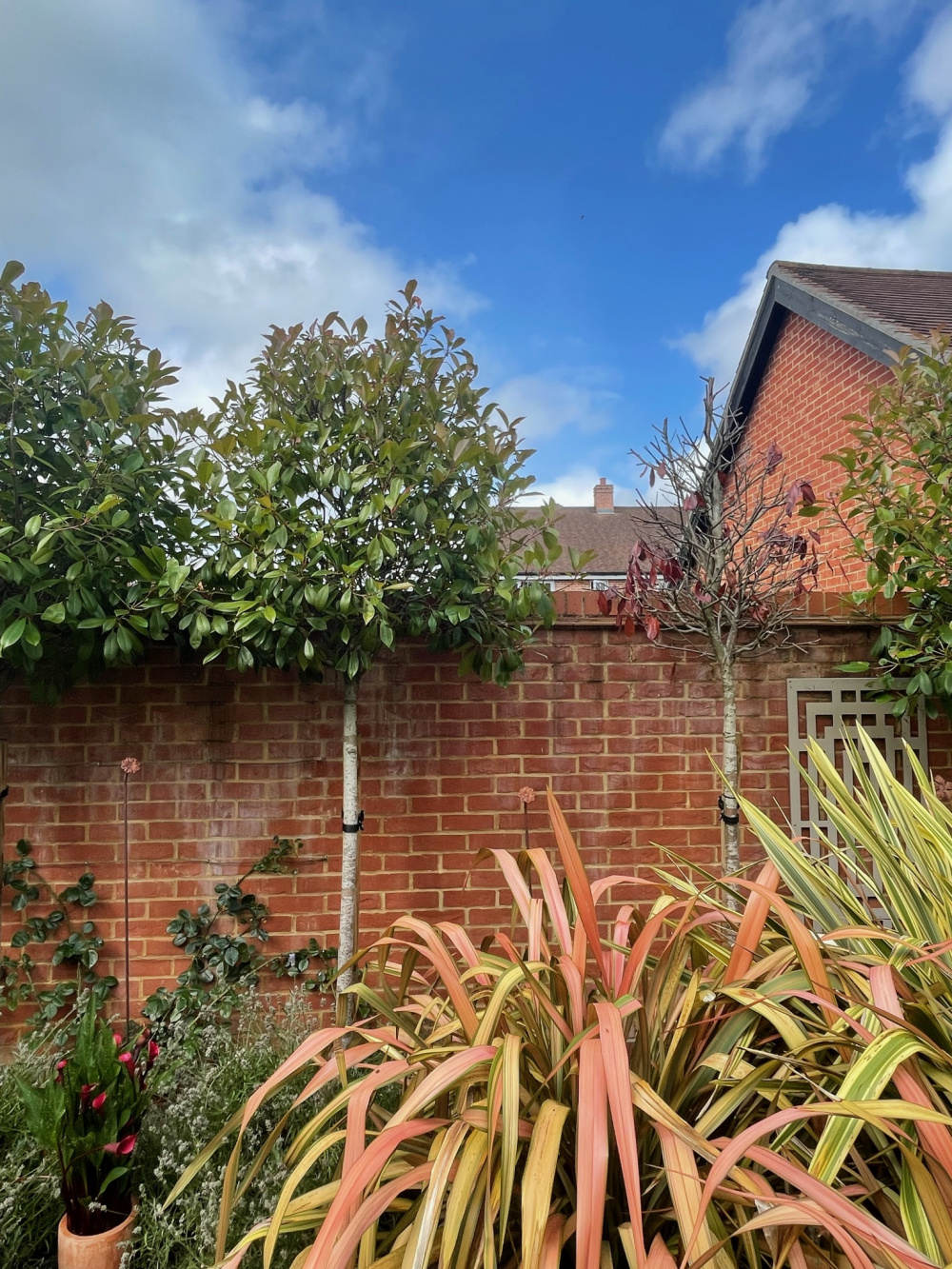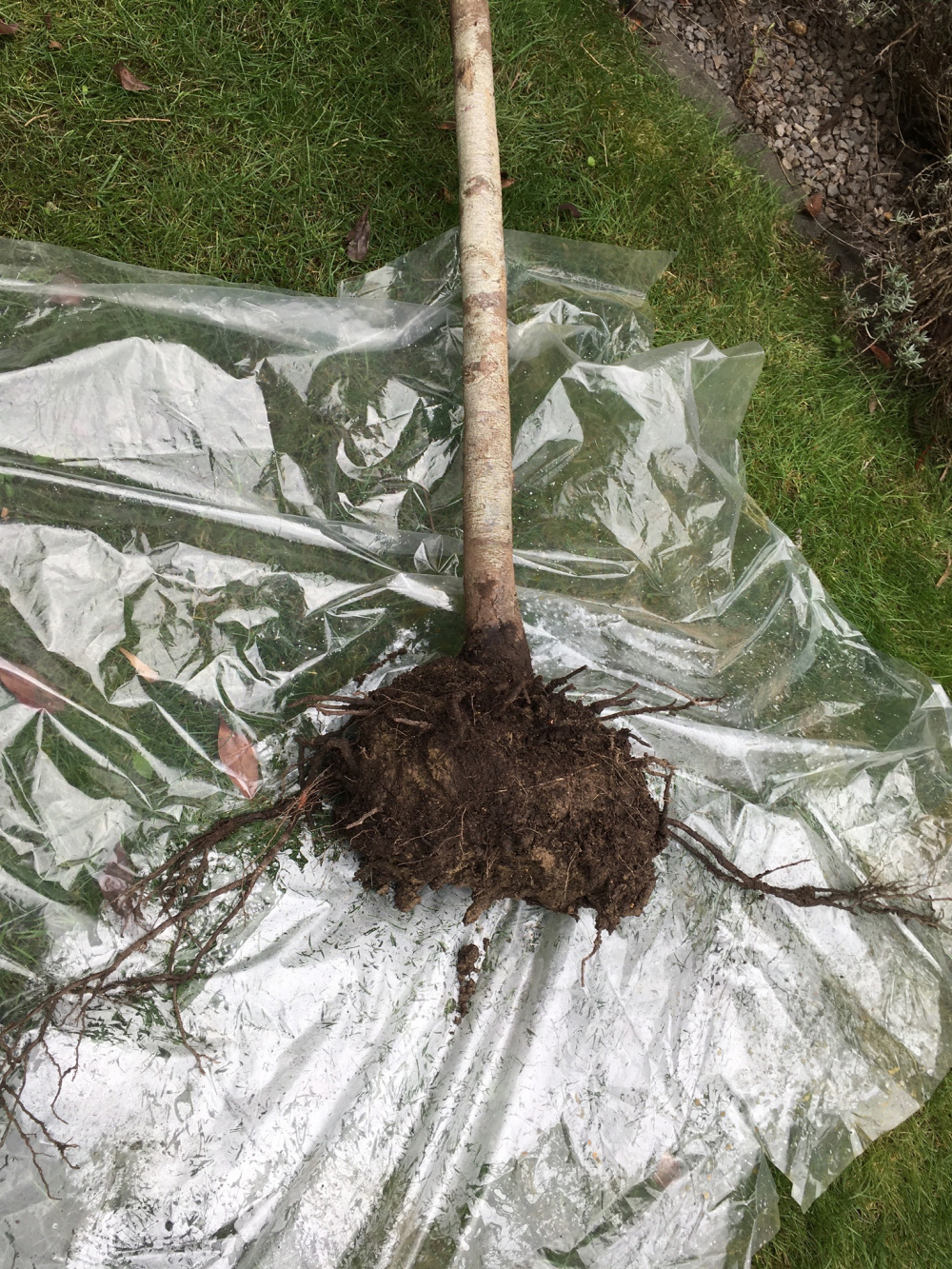This Forum will close on Wednesday 27 March, 2024. Please refer to the announcement on the Discussions page for further detail.
Photinia (3/4 standard) two out of five now dead.
As per the thread title we have five 3/4 standard photinias planted in a line about 2 metres apart. They have been in situ about 5 years. After 3 years one of them started to die back, the leaves became very dark tan in colour, glossy and rubbery. It is part of the irrigation system and was watered every evening, I bought a specific photinia feed from Germany to try and recover it but to no avail. When I took the plant out it was like taking a plug out of a socket - it had no real roots. I replaced it with another one and made sure the hole it was going into was lined with good quality bush/tree compost and over the last two years it has been ok.
Two years further on and now another one has died - next to the first one that died! It too was on the irrigation system and when I took it out it also had no real root ball and again came out easily like a plug out of a socket. The area around all these plants is soil, covered with a weed suppressant membrane with large gravel over the top of that. What I did notice when digging around it to clear the gravel/soil away from around the base of the dead tree was that there were hundreds, nay thousands, of what I can only describe as 'jumping fleas'! They didn't like daylight and skipped and jumped like grass hoppers back to darkness. Each 'flea' thing varied in size from say 8mm to 1mm. Seemed to be silver in colour on their backs. I managed to trap one and hopefully I will be able to attach a picture to this post. I ask myself - are these creatures affecting the photinia rootballs?
As to the soil, we are on a new build estate and I am aware that some people have issues with the quality of the soil left by some developers. But I would say our soil is generally ok and appears to be neither particularly clayey or sandy. When replacing the first tree that had died back I did note that about 12/18inches down the 'soil' was very hard compacted gravel of some sort. Likely not builders debris and we do live in an area historically known for large scale gravel extraction. The remaining 3 plants appear to be doing ok, although I do note that they all seem to lose a lot of leaves over the gardening year.
I have a replacement plant on order for delivery in the next week or so, I am anxious to give the new plant the best start and would be grateful for any advice.

I have a replacement plant on order for delivery in the next week or so, I am anxious to give the new plant the best start and would be grateful for any advice.


0
Posts
I have just watched builders put down a thick covering of top soil straight on to weeds and compacted soil in the garden next door .A perfect example of an area where plants will ultimately fail.
How far down does the gravel go it should aid drainage but it could also inhibit fine plant roots. A new garden is all about soil prep even if you feel privacy is your priorty.
There is also a standard Photinia out on the street here. Planted last year, I believe, it's leaves were spotted leathery and blacked by a raw cold wind that whipped across the site last winter. It then dropped them all in shock but has recovered, growth is spindley
Last November was wet followed by minus 10 in parts of the country, photinias hate very' wet feet' leaf spot is more prevelant in the winter months as a result. Some plants went into spring stressed.
Sorry but I would never use an irrigation system on these. They need four to six large cans once a week possibly more in dry weather right down at the roots avoiding run off. You need to encourage roots down wards so they don't just sit on the surface. You will need to make your own judgement over the winter as new plants can still suffer from drought but take into consideration the possibility of frost. I wouldn't feed until fully established and remove the gravel for good. An annual mulch of composted bark is best.
Evergreens naturally loose leaves over the year especially in spring.
Could be springtails they hate the light but as @JennyJ has mentioned doubt they have eaten your plant. More likely they have been attracted to the open compost and decay.
Some specimen trees can take years to actually die. We are gardening in challenging timesI think.
*as per my original post, the area is known for commercial gravel extraction so potentially it could go down quite far.
I've found an old photo of some work being carried out on our drains shortly after we moved in, this is about 20 feet away from the photonias subsequently planted in a new garden. I hope you can see the layer of compacted gravel about 12-24" below the top layer of soil. Looks to be pretty deep to me.
A pickaxe is a tool that some gardeners will genuinely use to break through clay. What you are looking for is a loose medium. Plant roots need oxygen to survive.
I notice the Phormiums are doing well, perhaps plants such as grasses with shallow root runs is an idea or raised beds.
I realise that this is a long thread that takes time to read and adsorb but I hope that others can add their thoughts. @Fairygirl or @McRazz might be about?
The only decent ones are those grown as a shrub/hedging, which can cope better. The neighbour across from me has quite a lot up against the house wall. Ideal as they get warmth and protection from the wall, good drainage there, but enough moisture as it's directly in the path of the prevailing rain. Some other shrubs which soak up excess too. That's what they need - warmth and moisture, with good drainage.
As that one is failing there, it's likely that it's just that poor, compacted growing medium, and without improving that, new plants will continue to fail. The others look fine. You'd have to dig out a decent space and add lots of organic matter - compost, rotted manure etc, then wait until the ground's more favourable to plant. New material will settle over winter, so you would add more in spring to get the levels right. If you're in a drier, milder part of the country than me, that organic matter will also help retain moisture. Planting the new one too soon may not work. I'd keep it potted over winter, somewhere sheltered, and wait for better weather in spring, and therefore better conditions for it to thrive, to plant it out.
I live in west central Scotland - not where that photo is...
The standard and espalier Photinias often struggle.
To answer some questions raised above. The leaves of the 4 existing photinia trees do not show any sign of spotting or disease etc. All of them flower in the spring and appear to be healthy. The trunks of the trees are about 18" away from the base of the wall which does provide some limited protection from North winds.
The new plant is now in. Having dug down, I first went through about 9" of 'good' soil. Then there was about 4" of clayish material then I hit the very hard gravely subsoil. Additionally as I made the hole deeper and wider it was clear I had reached what I can only assume is the natural water table about 18" down - could I be dealing with poorer conditions if I tried!! This jogged my memory that these were the same conditions I encountered when planting the last replacement tree a couple of years ago (which is still ok). This gravely subsoil is really really dense and tough and a pick axe was required, I tried to break it up around the base of the hole as best I could. The plant, having been delivered, I was not in a position to delay planting it - so I have.
I have made the hole as big as I practically could, filled the base and sides with the tree compost and placed the base of the plant above the newly discovered water table as much as I could. I fear, as spoken of here, that I am on a hiding to nothing but as the money was spent I feel I have to give it another try. I will report back here as and when.